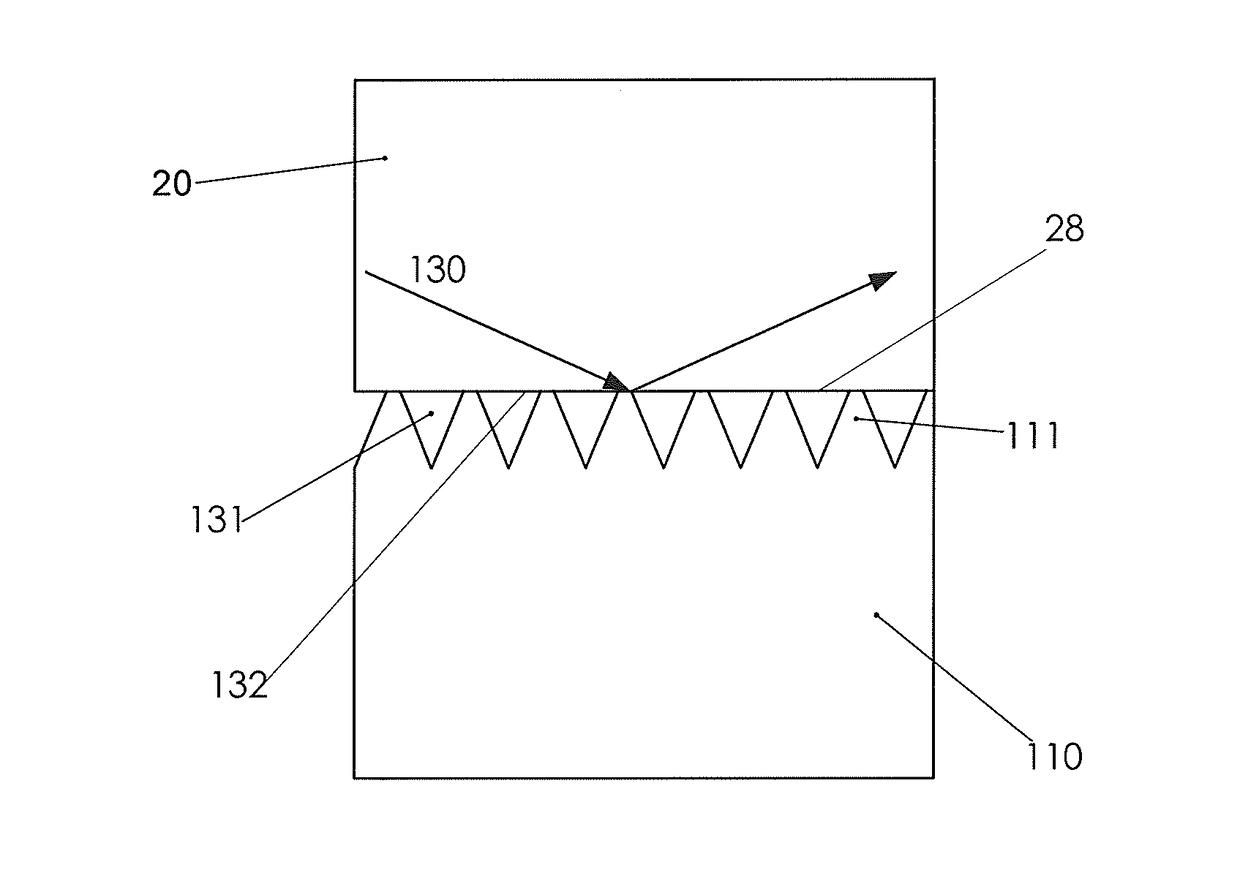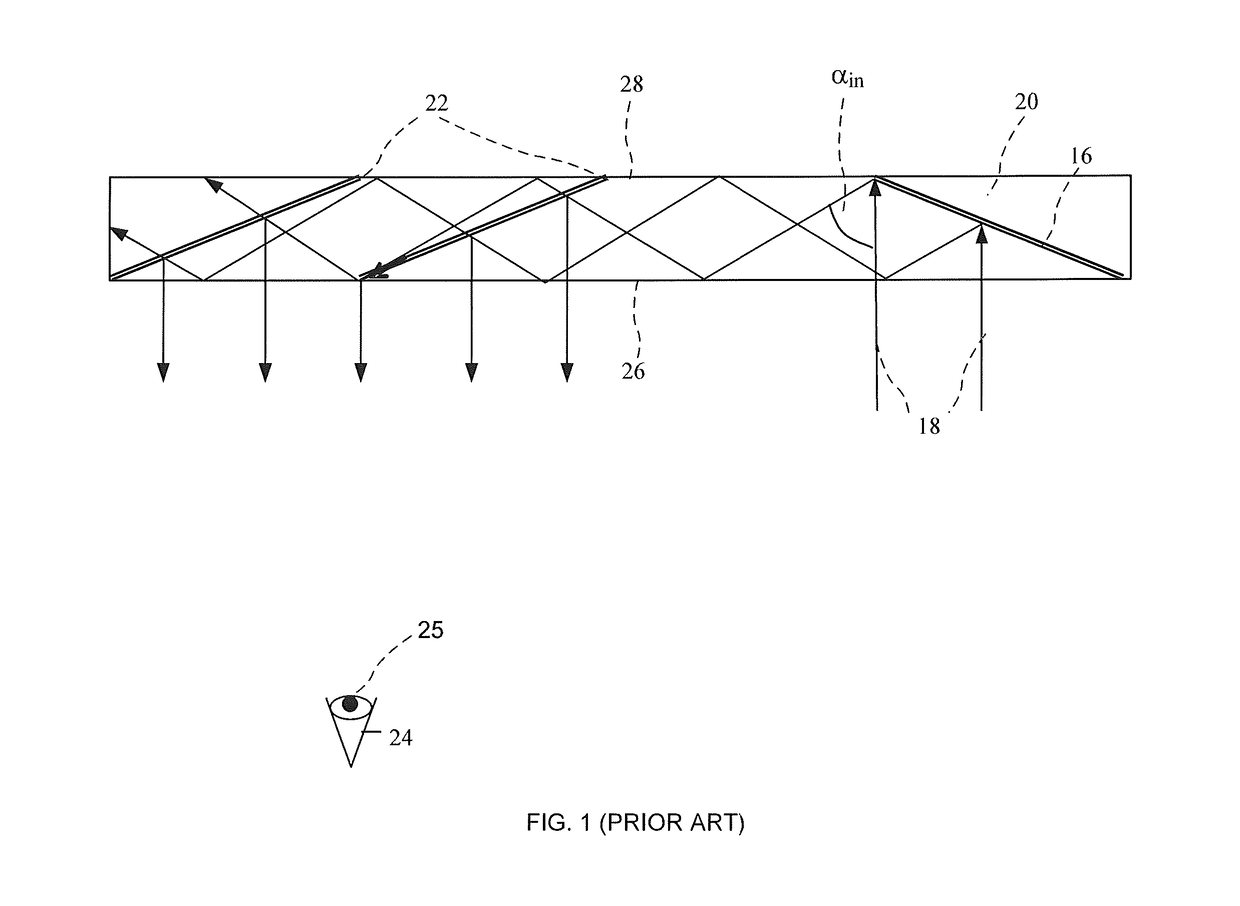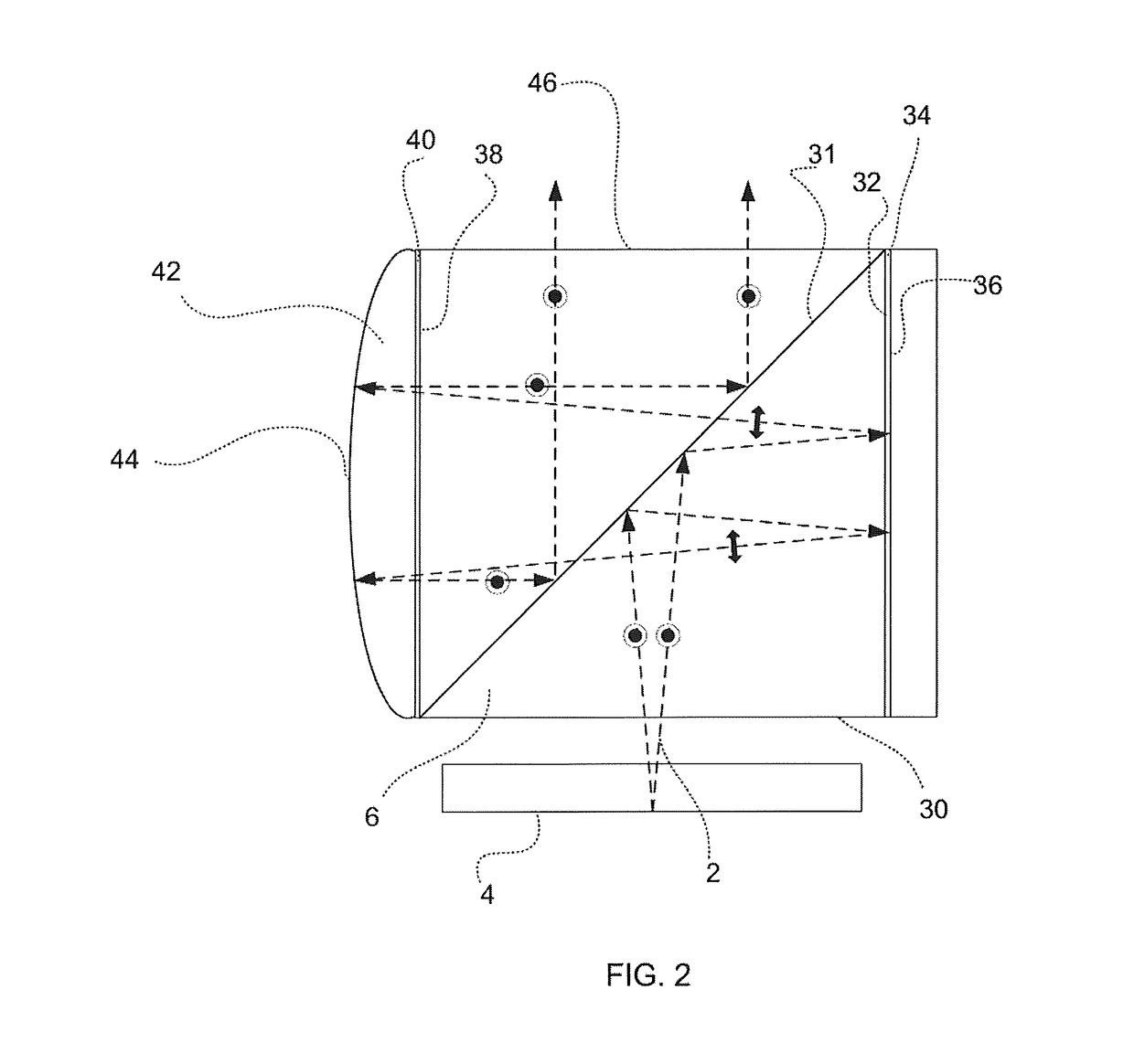Compact head-mounted display system protected by a hyperfine structure
a display system and hyperfine structure technology, applied in optics, instruments, optical elements, etc., to achieve the effect of convenient incorporation, large emb values, and convenient exploitation
- Summary
- Abstract
- Description
- Claims
- Application Information
AI Technical Summary
Benefits of technology
Problems solved by technology
Method used
Image
Examples
Embodiment Construction
[0035]FIG. 1 illustrates a sectional view of a prior art optical system including a planar substrate 20 and associated components (hereinafter also referred to as an “LOE”), utilizable in the present invention. An optical means, e.g., a reflecting surface 16, is illuminated by light waves 18, which are collimated from a display of a light source (not shown). The reflecting surface 16 reflects incident light waves from the source, such that the light waves are trapped inside the planar substrate 20 of the LOE, by total internal reflection. After several reflections of the major lower and upper surfaces 26, 28 of the substrate 20, the trapped waves reach an array of selective partially reflecting surfaces 22, which couple the light out of the substrate into a pupil 25 of an eye 24 of a viewer. Herein, the input surface of the LOE will be regarded as the surface through which the input light waves enter the LOE, and the output surface of the LOE will be regarded as the surface through ...
PUM
 Login to View More
Login to View More Abstract
Description
Claims
Application Information
 Login to View More
Login to View More - R&D
- Intellectual Property
- Life Sciences
- Materials
- Tech Scout
- Unparalleled Data Quality
- Higher Quality Content
- 60% Fewer Hallucinations
Browse by: Latest US Patents, China's latest patents, Technical Efficacy Thesaurus, Application Domain, Technology Topic, Popular Technical Reports.
© 2025 PatSnap. All rights reserved.Legal|Privacy policy|Modern Slavery Act Transparency Statement|Sitemap|About US| Contact US: help@patsnap.com



